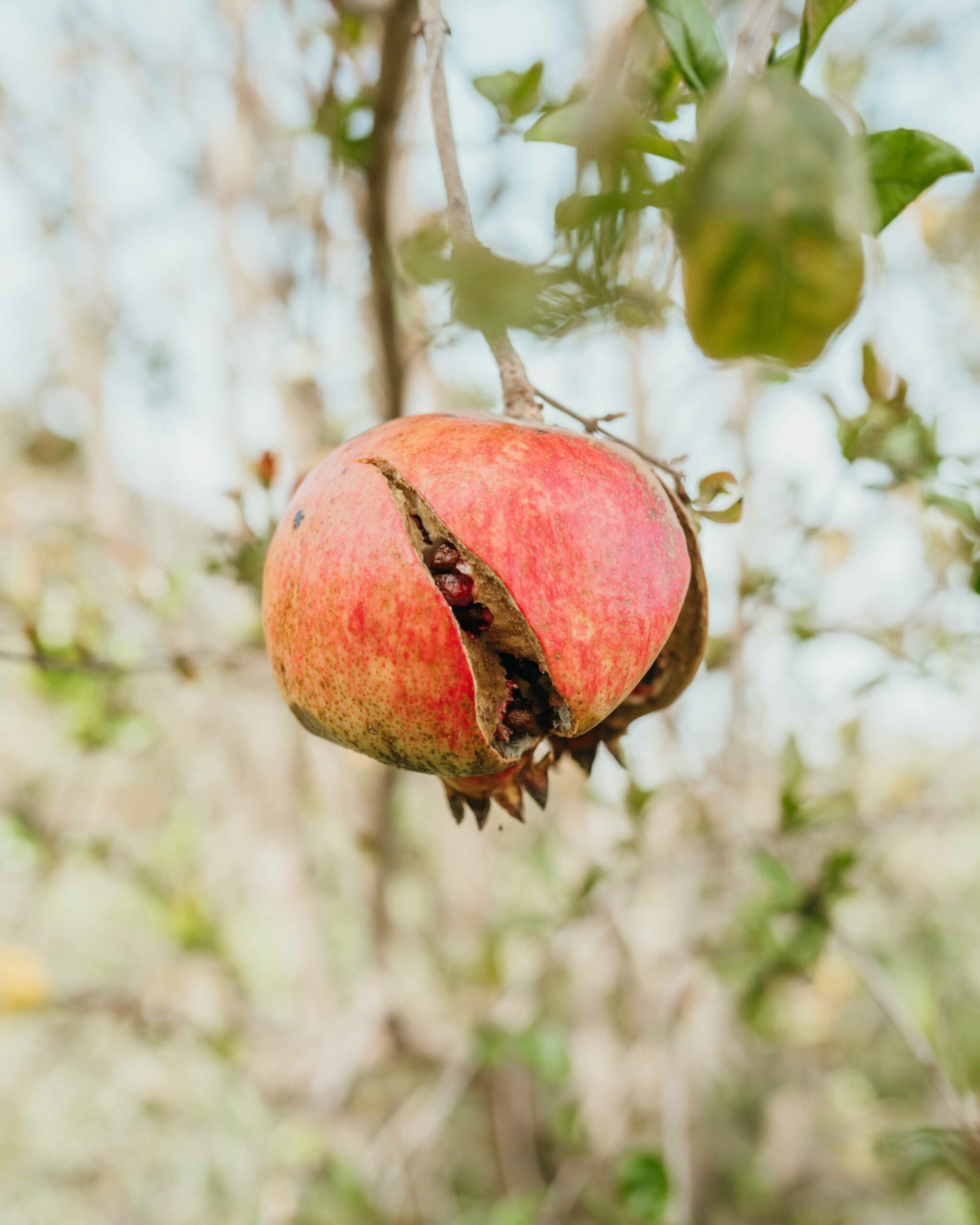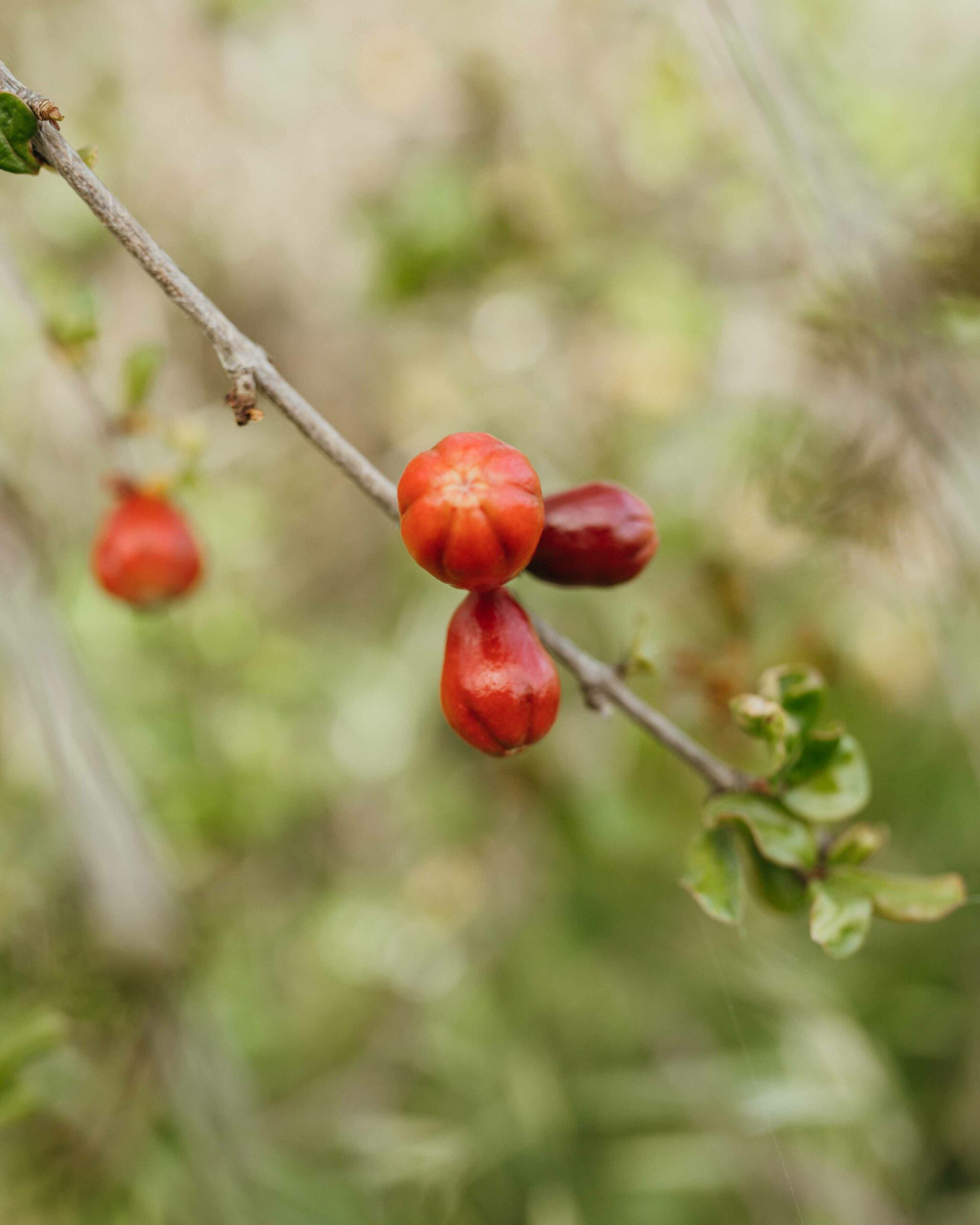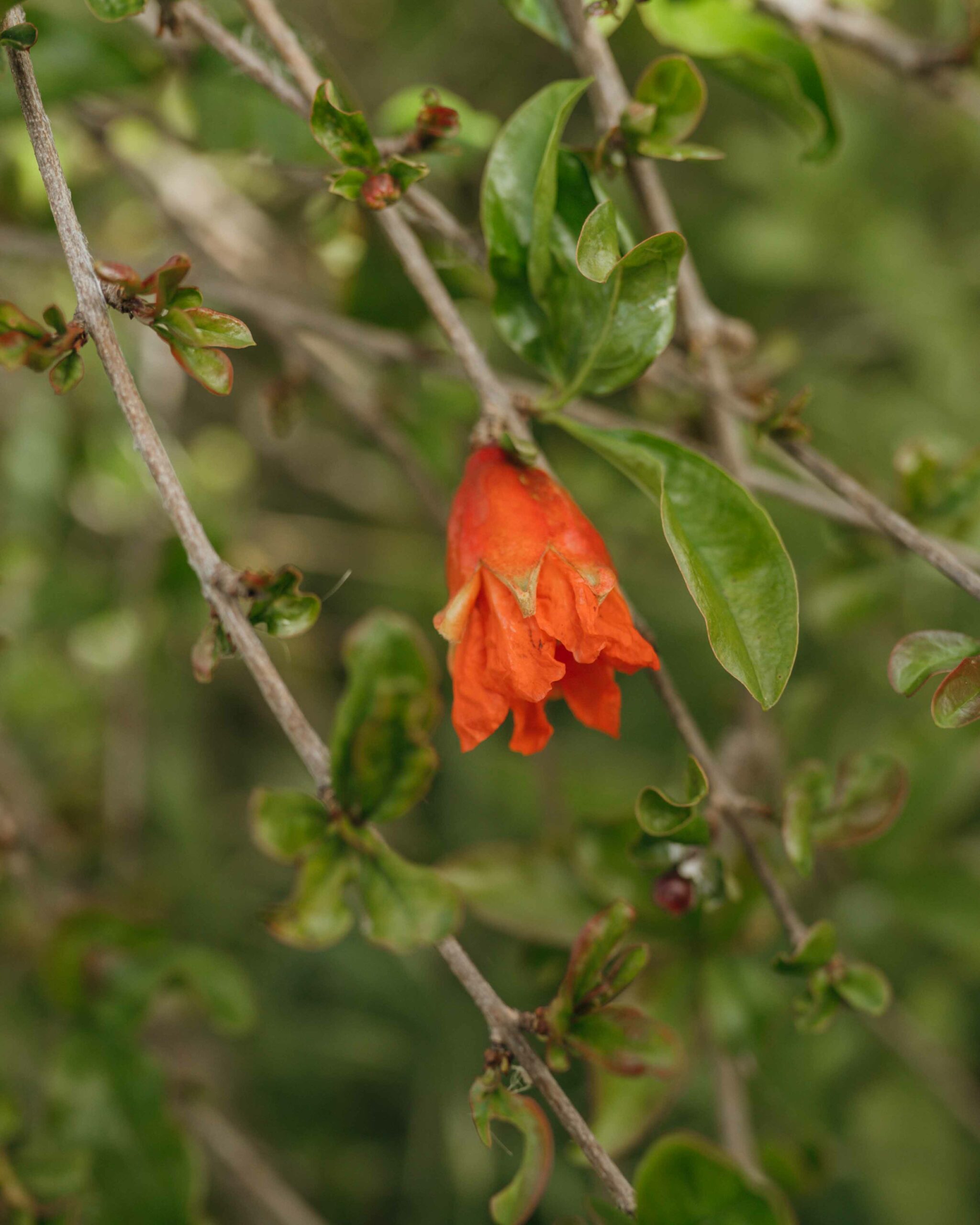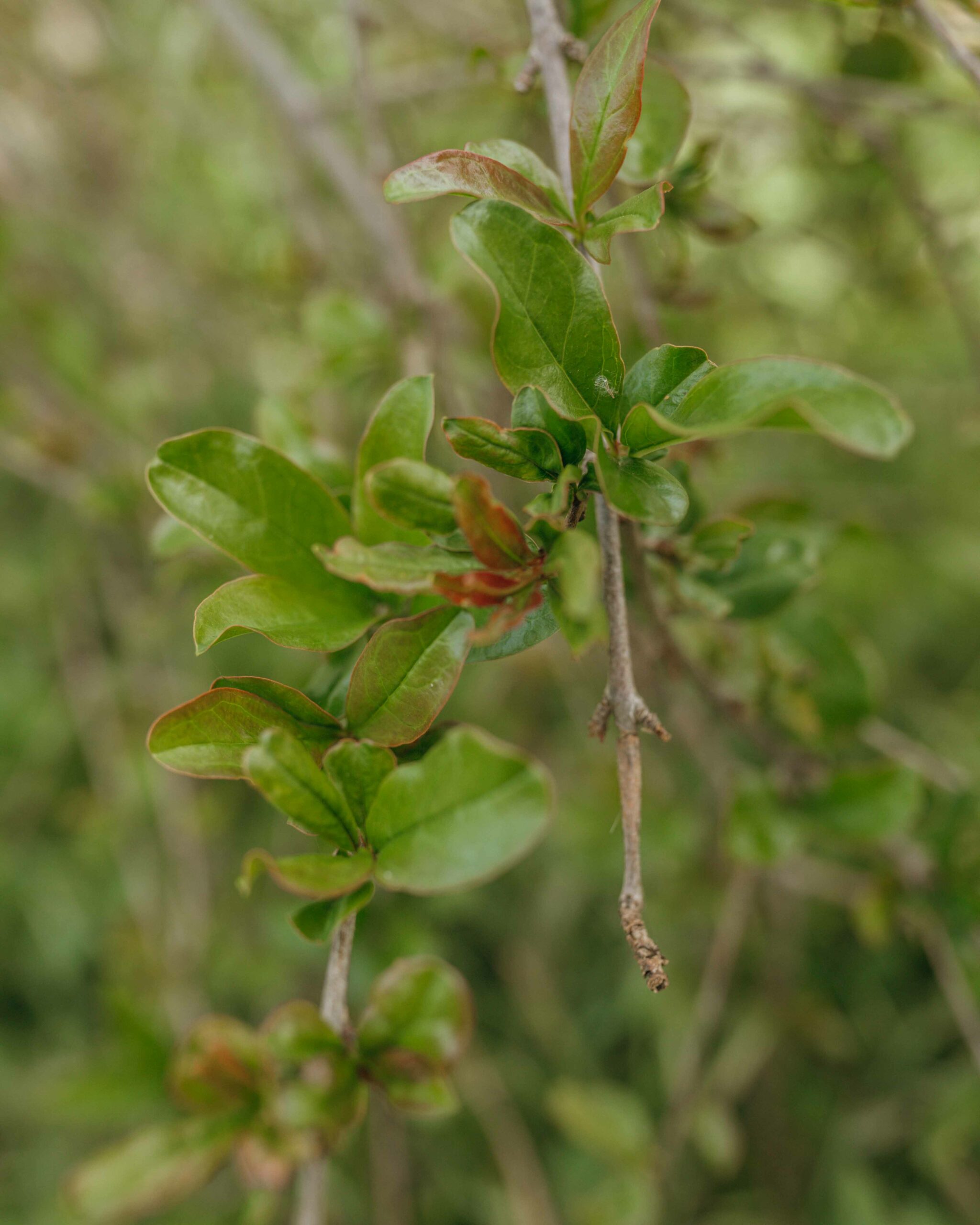Punica granatum
GRANATAPFEL
Englische Bezeichnung: Pomegranate
Spanische Bezeichnung: Granado
Familie
Weiderichgewächse (Lythraceae)
Verwendbare Teile:
Frucht, Kerne
Hauptbestandteile:
Mineralstoffe: Kalium
Vitamine: C, K, B-Vitamine
Sekundäre Pflanzenstoffe: Antioxidantien, Phytosterine, Punicalagin
Ernte-Hinweise:
Ob ein Granatapfel reif ist, merkt man zum einen an seinem Gewicht. Die reife Frucht liegt schwer in der Hand. Ein gutes Zeichen ist es, wenn die Haut innen komplett weiß ist und die Kerne rot leuchten.
Verwendung:
Saft, als Topping auf Desserts, Smoothie-Bowls, Eis, in Salaten
Die spanische Stadt und Provinz Granada ist nach dieser Frucht benannt. Die Bezeichnung „Granatapfel“ leitet sich aus dem Lateinischen granatus = körnig, kernreich ab und bezieht sich auf die große Anzahl von Kernen. Sie sind ein wahres Superfood, denn die hohe Konzentration verschiedener wertvoller Inhaltsstoffe bringt viele gesundheitsförderliche Wirkungen mit sich.
Family
Loosestrife family (Lythraceae)
Usable parts:
Fruit, seeds
Main components:
Minerals: Potassium
Vitamins: C, K, B vitamins
Secondary plant substances: antioxidants, phytosterols, punicalagin
Harvesting guideline:
You can tell whether a pomegranate is ripe by its weight. The ripe fruit is heavy in the hand. A good sign is when the skin is completely white on the inside and the seeds glow red.
Use:
Juice, as a topping on desserts, smoothie bowls, ice cream, in salads
The Spanish city and province of Granada is named after this fruit. The name „pomegranate“ is derived from the Latin granatus = granular, seed-rich and refers to the large number of seeds.
They are a true superfood, as the high concentration of various valuable ingredients has many health-promoting effects.
Familia
Familia de las lantáceas (Lythraceae)
Partes utilizables
Fruta, semillas
Componentes principales:
Minerales: Potasio
Vitaminas: C, K, vitaminas del grupo B
Sustancias vegetales secundarias: antioxidantes, fitoesteroles, punicalagina
Guía de cosecha:
Se puede saber si una granada está madura por su peso. La fruta madura pesa en la mano. Una buena señal es cuando la piel está completamente blanca por dentro y las semillas brillan en rojo.
Uso:
Zumo, como cobertura de postres, smoothie bowls, helado, en ensaladas
La ciudad y provincia española de Granada lleva el nombre de esta fruta. El nombre „granada“ deriva del latín granatus = granuloso, rico en semillas y hace referencia al gran número de semillas.
Son un verdadero superalimento, ya que la alta concentración de diversos ingredientes valiosos tiene muchos efectos beneficiosos para la salud.










































